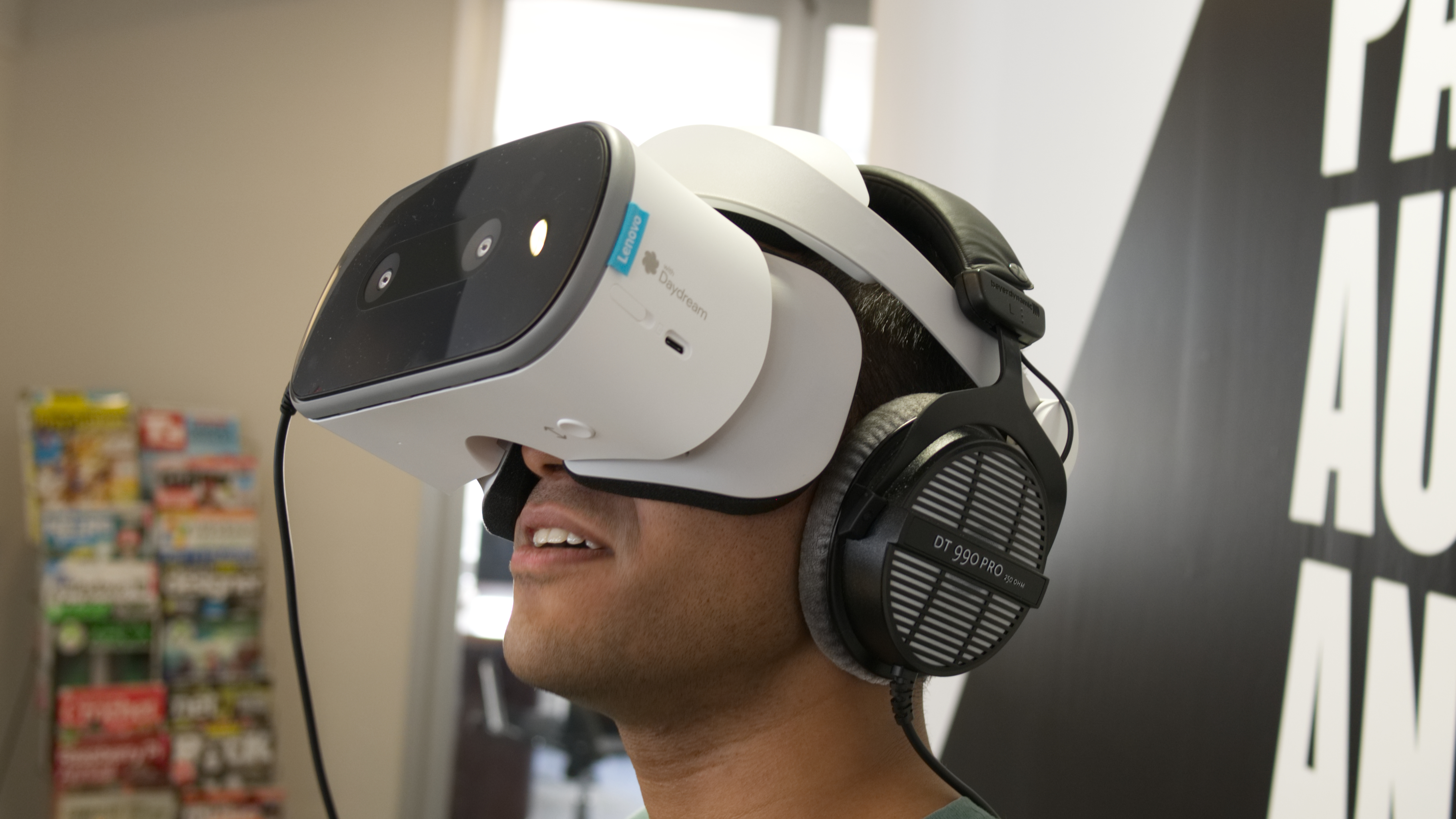TechRadar Verdict
Impressive by both mobile and tethered standards, Lenovo’s new model has the potential to raise the quality of interactive VR and to take the medium a step further.
Pros
- +
Phone-free setup
- +
VR that you can take anywhere
- +
WorldSense works brilliantly
- +
Good value
Cons
- -
Needs more games and apps
- -
Difficult to take around
- -
LCD display is good, but not ideal
Why you can trust TechRadar
There’s no doubting that Lenovo’s Mirage Solo headset is revolutionary for the mobile VR market in a few ways.
It provides a very good Google Daydream experience without the need for an expensive flagship smartphone (it has the innards of a modern Android smartphone powering it). You can experience virtual reality the way it’s meant to be experienced, with six-degrees of freedom (6DoF) thanks to its inside-out tracking sensors that let you move about the environment. It’s surprisingly comfortable, too, taking a few notes from PlayStation VR to make long VR sessions something that I’d actually consider doing from time to time.
The tenet of mobile VR has always been its low price, giving consumers a decent option that punches well below the quality found on PC-bound headsets like Oculus Rift and HTC Vive Pro, but at that, also well below their price. So, it might come as a bit of sticker shock to see that the Mirage Solo is going for $399 (about £293, AU$530).
But if VR is on your horizon, or if you’re just looking for a captivating option that doesn’t require a pricey smartphone or a computer to use it, Lenovo’s headset is the best option out there. There are enough technical advancements crammed into this headset to justify the price, but Google’s platform needs to grow considerably to make this a truly tempting purchase for the mainstream audience.
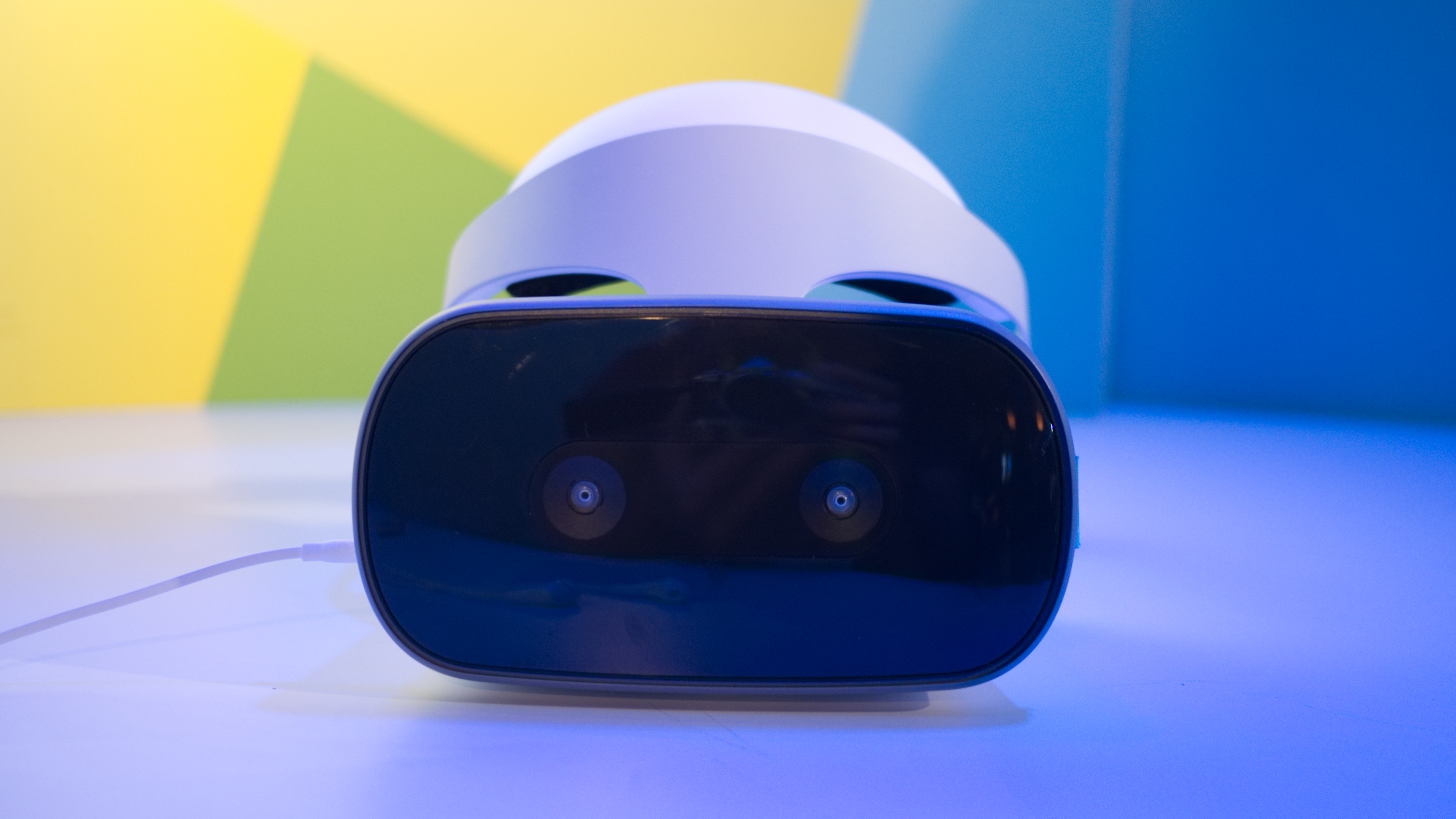
Setup
There’s usually a lot to write when it comes to setting up other virtual reality headsets. Even the Oculus Go, which is cable-free, still relies on myriad steps for setting it up, requiring a smartphone to get you started. But the Lenovo Mirage Solo is as easy and breezy as it should be. Take note, everyone.
You take the headset from the box, charge it up with the included USB-C cable and charger, then boot it up with controller in-hand. After a few initiation steps (all performed while using the headset) you’re set free in Daydream OS, Google’s dedicated VR operating system.

Operating the Mirage Solo is, in many ways, exactly like what we saw on the Google Daydream headset in that it’s user-friendly as can be, but there are far more appreciated features here.
We’ll dig into the physical differences in the next section, but focusing on the software experience, it’s akin to a modern gaming console in that when you hit the home button during a game, you’ll be sent to a screen that lets you adjust settings and switch between other recently launched apps or games, if you please. Visually, we can see its Android roots showing, as what’s seen here looks like the pull-down menu on, say, a Google Pixel 2. Don’t forget, there’s basically a phone’s worth of hardware inside and, apparently, the software, too.
With all of that setup under your belt, finding a Daydream app or game is as simple as booting the Google Play Store located on the home page. Google does a pretty decent job of surfacing noteworthy content for perusal, though it’s not all free to enjoy and it’s not all worthwhile. We’ve seen apps upwards of $14.99, but most of the good stuff is within the $10 or less range.
Design
The Mirage Solo is almost like the lovechild of the PSVR headset and the Google Daydream View, combining their sheer simplicity in design with impressive functionality that enhances the VR experience during marathon sessions.
Given that all of the hardware is stuffed into the headset itself, the comfort yielded here is remarkable, as Lenovo has opted to front-load the weight of the Mirage Solo on the top of your forehead. A twisting knob on its back brings the headset around your skull, making it fully adjustable. If you’re struggling to find the perfect fit or to keep the outside light from seeping in, even the display housing can move back and forth without distorting the image.

On front of the headset, there are two cameras used to enable WorldSense, Google’s technology that gives this headset 6DOF. Like the Vive, this headset makes a map of your environment and alerts you when you’re about to step outside of a safe zone. Except unlike the Vive, you’re not bound to your VR-ready room. You can take this literally anywhere, which is as cool and nerdy as it sounds. It’s somewhat obvious to say, but if you have a small play space, your movement will be more limited, but still enhanced over regular Daydream or Samsung Gear VR experiences. Even in larger play spaces, Daydream OS seems to limit most experiences with a boundary of about six feet in either direction.


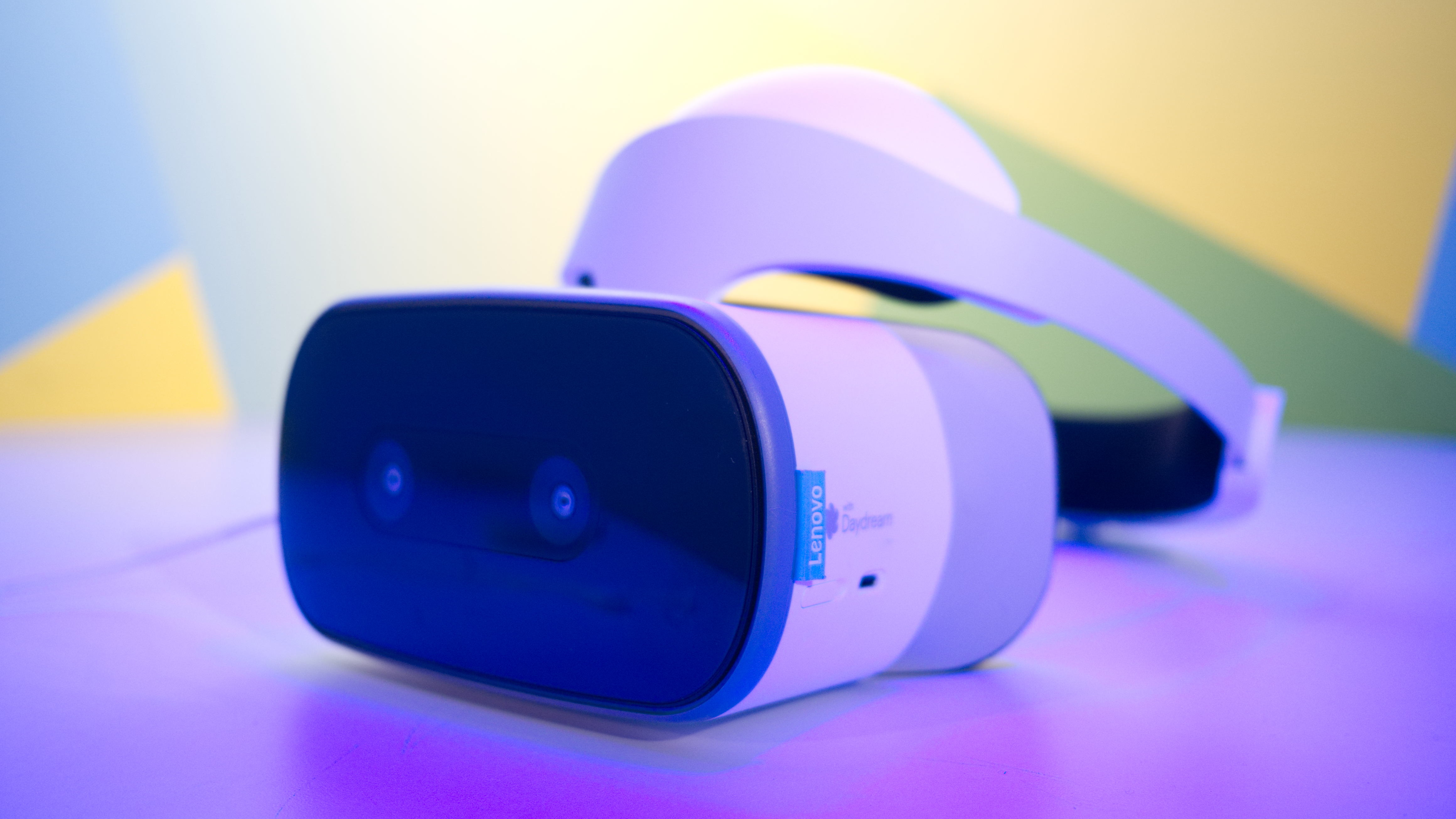
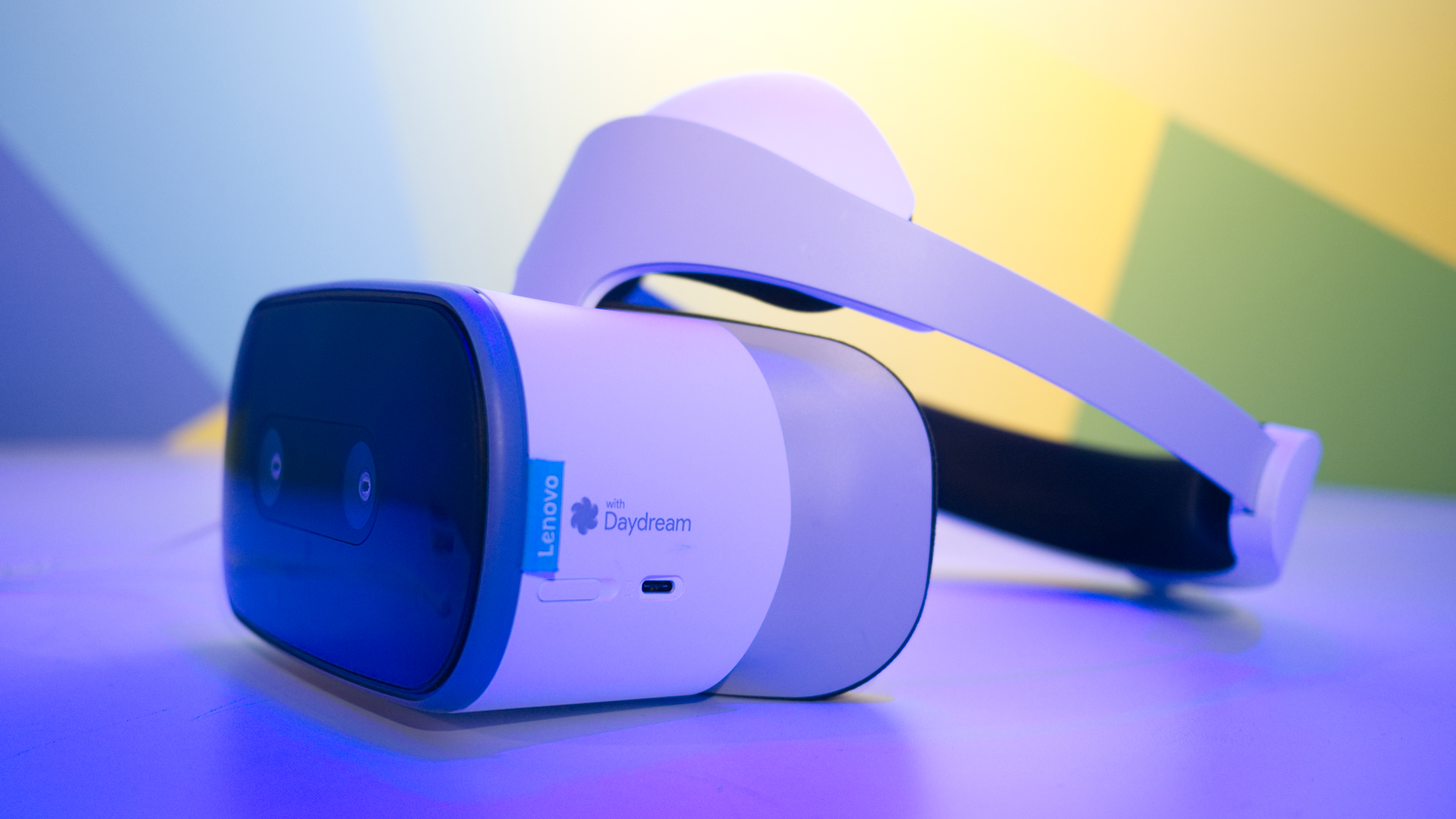

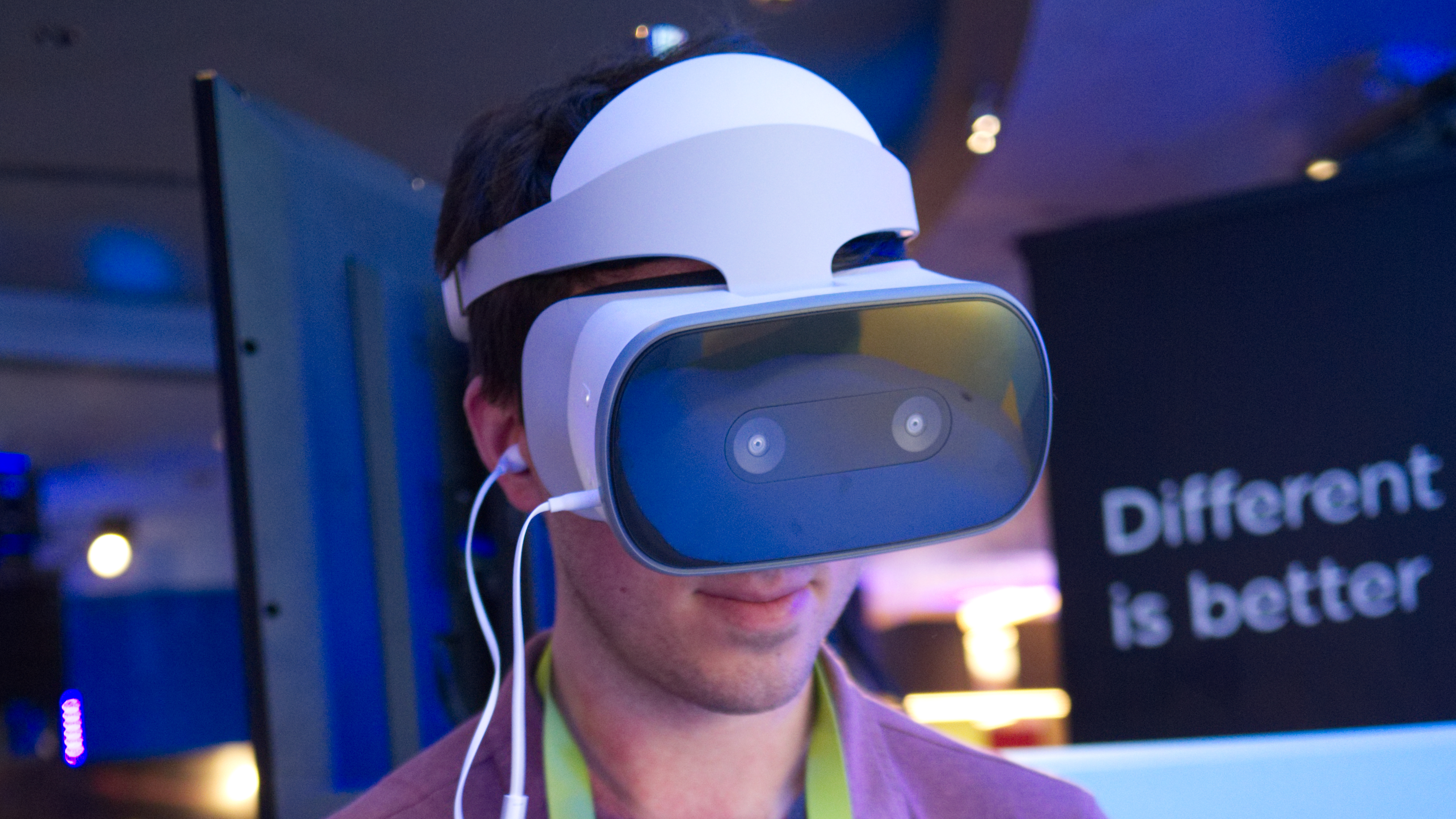
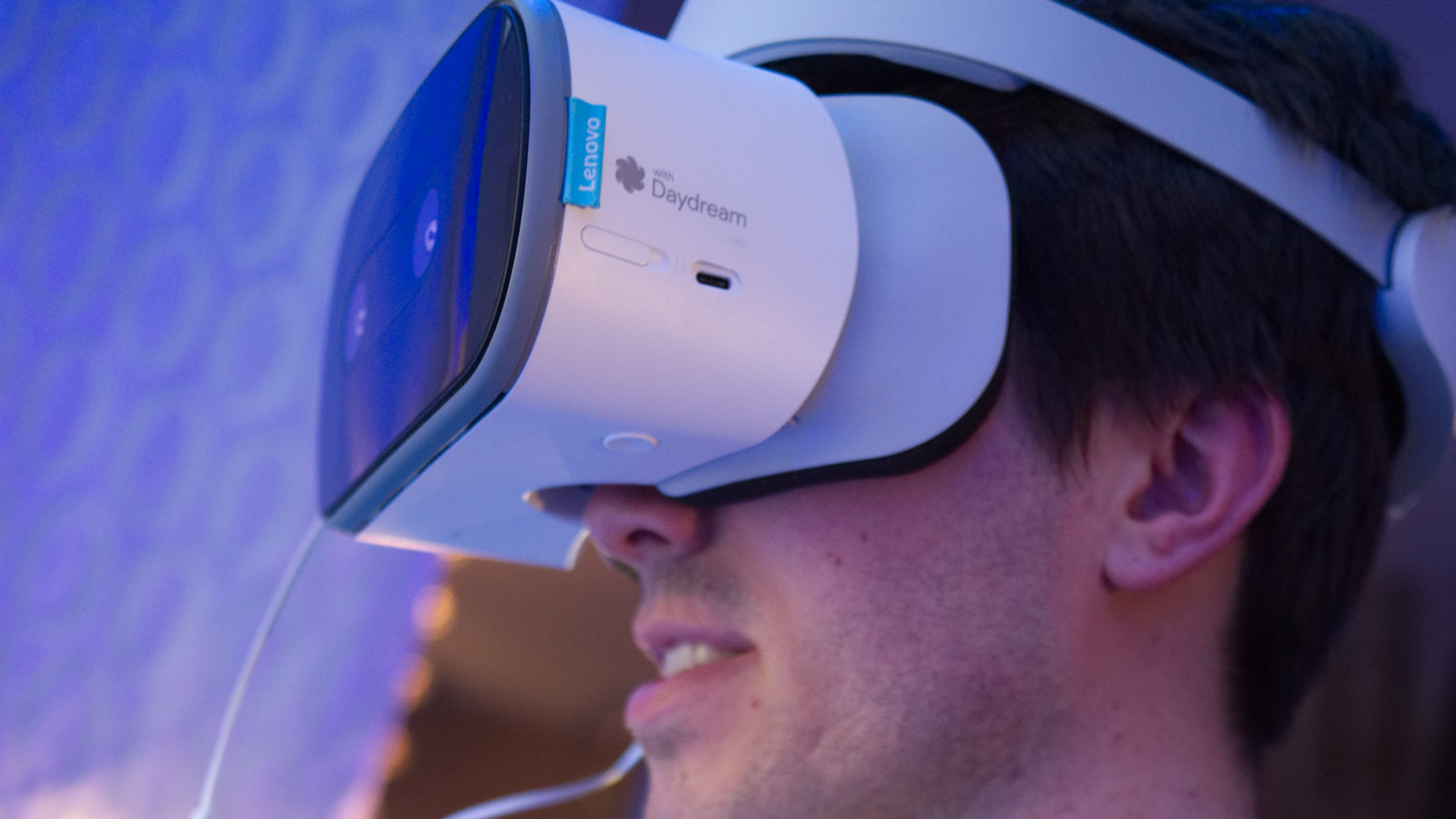
Moving around the device, one side plays host to a USB-C charging port and a microSD slot that’s handy for loading VR180 videos captured by the Lenovo Mirage Camera, or providing extra storage for games and apps. Around to the other end, you have your power button, volume controls and a 3.5mm headphone jack.
All in all, the Mirage Solo is fairly compact, but due to its plastic construct, it’s tough to fit into a bag for travel. If you don’t want to stow it in a grocery bag or tote, you’re only other option really is to carry it or wear it, and that will get you some strange looks. But hey, these are strange times, so I’ve embraced it by simply holding it in my hands a few times walking to and from the work office. It’s not ideal.

Lenovo has also included Google’s Daydream remote, a necessary accessory for interaction within games and apps. From what we can tell, it’s the same hardware here operating over Bluetooth, but there seems to be some more functionality here, including capturing screens or videos with shortcuts. If you hold the home and volume up buttons simultaneously, you’ll begin recording video to the storage. Home and volume down takes a snapshot. From there, you can view them within the storage section of the settings menu. Oddly, these shortcuts weren’t working for us during the review, but we’ve asked Google to see what’s going on.
Cameron is a writer at The Verge, focused on reviews, deals coverage, and news. He wrote for magazines and websites such as The Verge, TechRadar, Practical Photoshop, Polygon, Eater and Al Bawaba.
